A few years ago, I came in possession of this very special toy and after closer investigation it turned out that it has a link to Fernand Martin.
The seller could not give me any further information, he only knew that this toy was bought in France a long time ago.
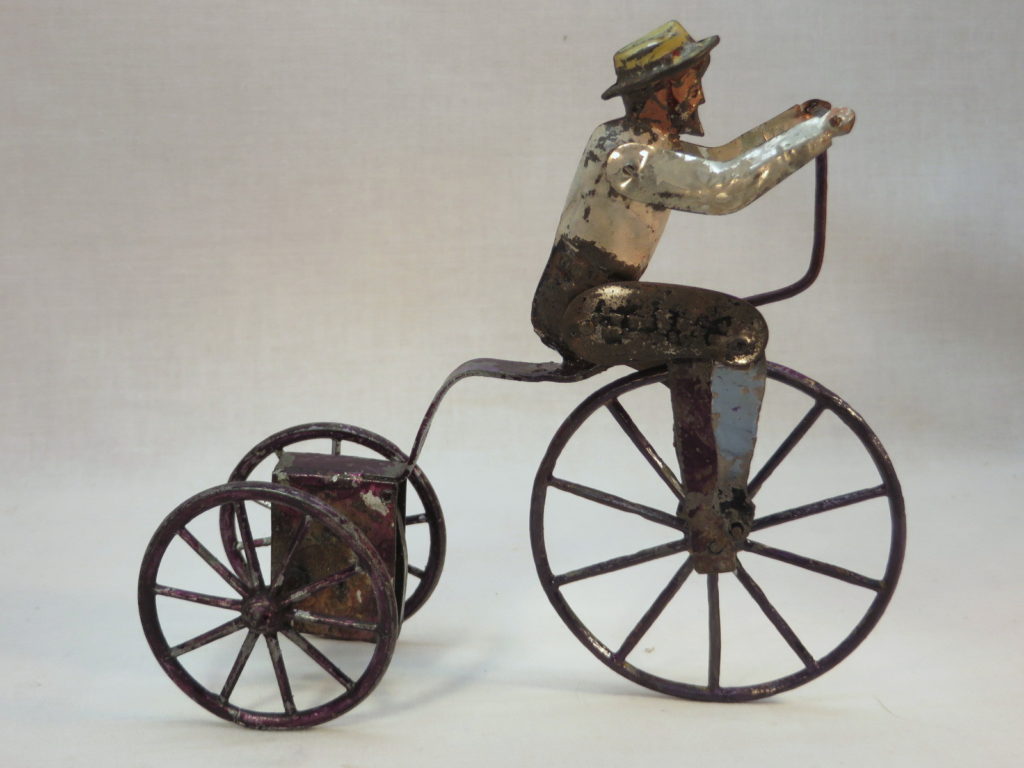
It is marked on one of the legs with: FM Bt. S.G.D.G. MRe DÉPOSÉE. and that means : (Fernand Martin, Patent without government guarantees and brand name is registered )
FM = Fernand Martin
Bt > Breveté = patent
S.G.D.G. = This owas a common abbreviation for “Sans Garantie Du Gouvernement“ (without government guarantees).
MRe > marque =brand name
DÉPOSÉE. = registered
Martin has used this description more often on toys such as on this toy with number 41 La bicyclette Martin.
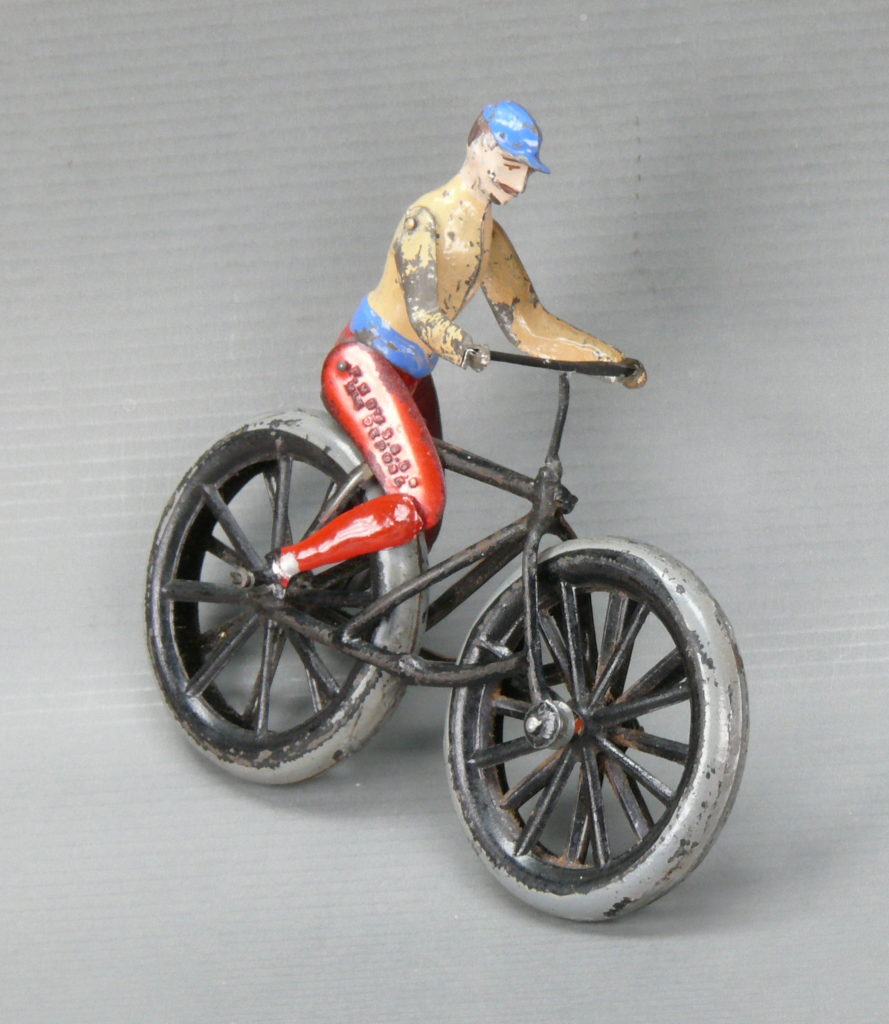
Fernand Martin has used almost the same man on several toys such as the:
- -old number 41, new number 121 -La bicyclette Martin 1892
-156 Le monocycle aérien 1896
-158 La famille vélo 1897
-159 La pompe 1897
-168 Le motocycle (has another hat)1898
So I estimate this unknown toy to be from around 1890 to 1900
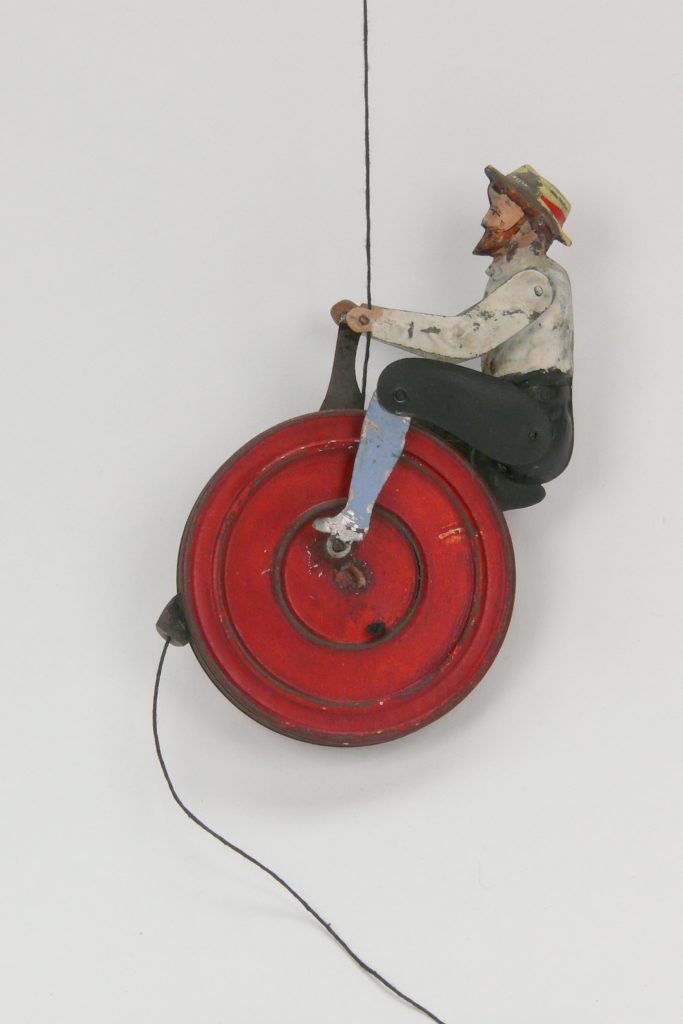
Toy from the collection of the Toy Museum Soltau (“Spielmuseum Soltau”) in Germany
The dimensions are about 13 x 13 cm (5.1 x 5.1 inch)
The drive is in the rear wheel and is based on a winding mechanism with a separate key, which was quite rare for Martin in that period.
The key must be inserted between the spokes in the winding mechanism and turned up.
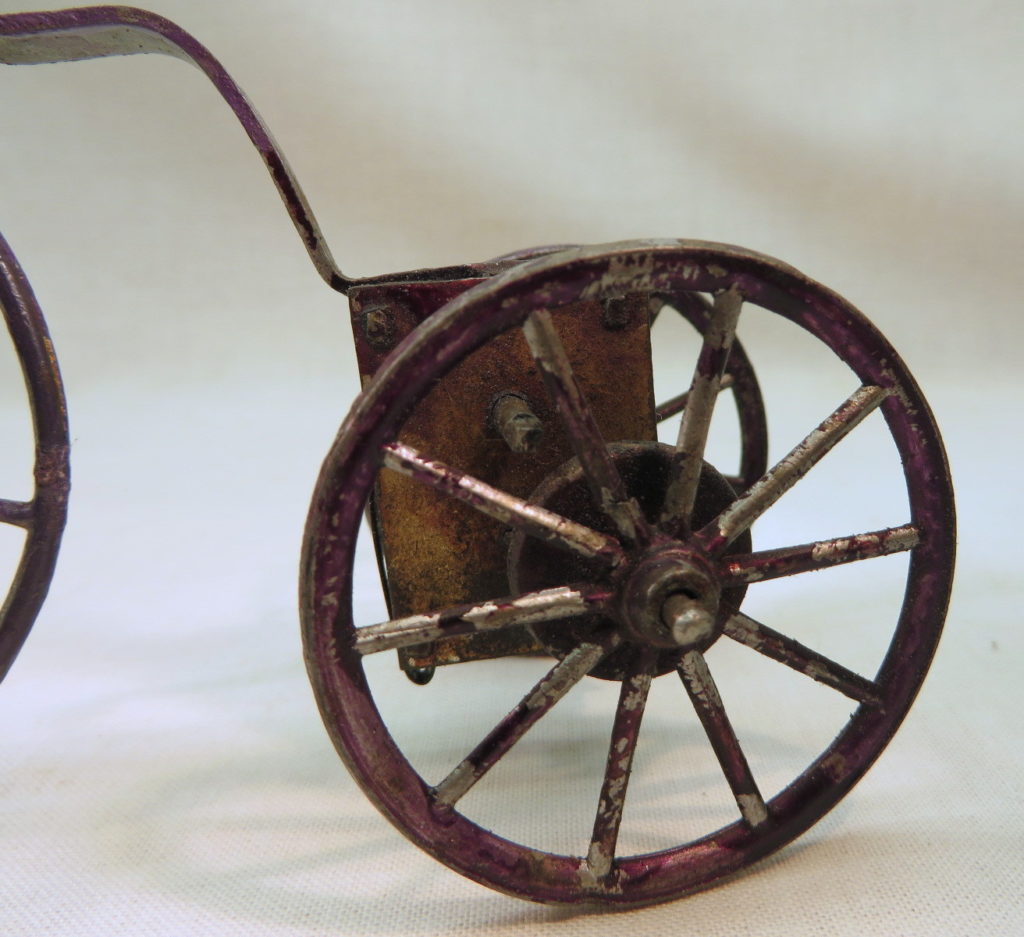
In the last years of the 19th century, Martin was due for replacement of the “rubber band” mechanism and the “flywheel” mechanism and was therefore probably experimenting with various mechanical windings.
-Use the wheel as a key, see number 162 Les Boeufs and number 168 Le motocycle
-A mechanism with a separate key.
The only model with a separate key and made by Fernand Martin, is one in the second Martin period and that is the: Le petit colbuteur from 1908 with number 213.
Martin’s successor Victor Bonnet often used the separate key.
-A mechanism with a fixed key
In the end he opted for a mechanism with a fixed key and used this for his “Bonshommes” models and very rarely deviated from that.
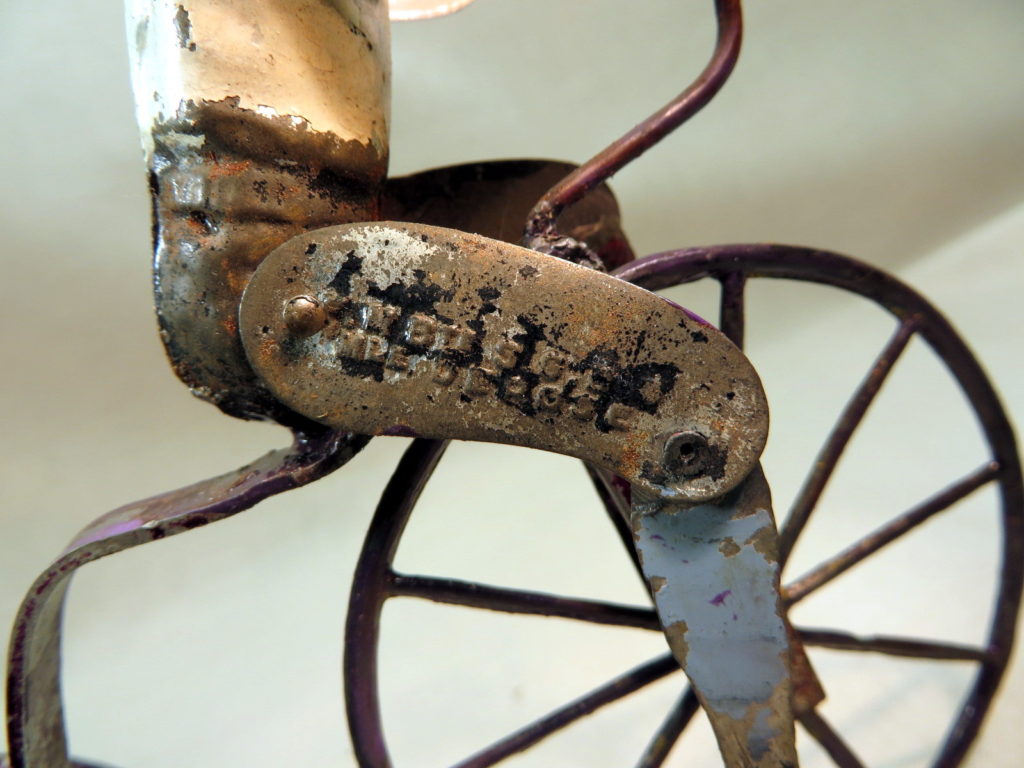
Hard to see but marked on one leg with: FM Bt. S.G.D.G. MRe DÉPOSÉE
Because this is an unknown toy, it must be carefully checked.
This piece is first well checked with UV light to determine if this is old or new paint and if there are any younger paint repairs.
It has turned out that it is original old paint and that there are no “touch ups” or repairs.
But in consultation with a Dutch leading restoration agency, I have decided not to do any further profound research, such as a pigments test, because this is very expensive.
An analysis of each paint sample must then be done.
And there is another problem, the pigments that were used at the end of the 19th century can also be found in the 20th century.
Even today, these older pigments are used.
For example, the restoration agency can imagine that the white color could still be “lead white” that had been in use since the Middle Ages, but it could also be “zinc white” that was used from the end of the 19th century but is still being used today.
The tricycle itself is painted with “peinture à l’alcool” this is an alcohol-based paint and was extremely popular at the end of the 19th century and used by many French and German toy manufacturers of that time, but again it is still used today.
Fortunately, it is possible to discover with a UV lamp whether paint with old pigments were used at a later stage.

Till now this toy is nowhere to be found in old catalogs or documented in any other way.
Fernand Martin was always busy designing new toys and it could have been an prototype by Fernand Martin.
Or probably this is a toy that is made on “special request” and not in normal production.
Martin has done this before and advertised on the back of his catalogs.
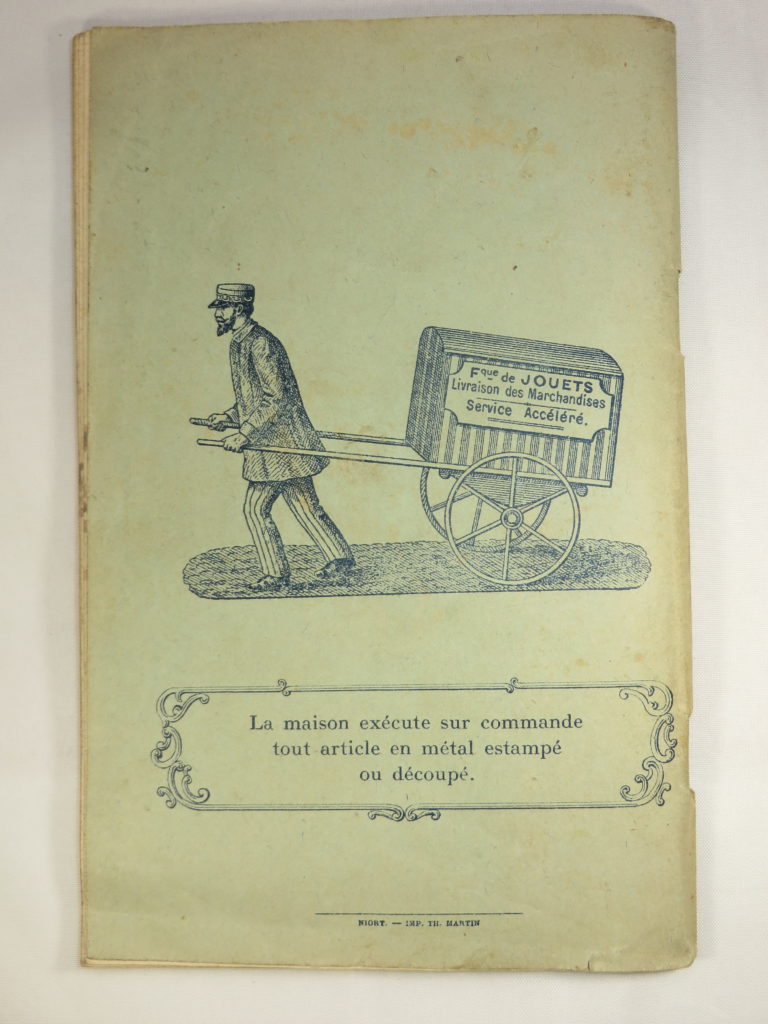
That Martin made these “specials” is also indicated in an article that is published in the March 2018 issue of the Antique Toy World Magazine and written by Renaud Fournier.
We see an inscription on the back cover of the 1898 Fernand Martin catalog which states that the Martin company “executions, based on orders, all articles in stamped or cut metal ”
In other words, the Martin toy company would execute special orders that were not necessarily part of their regular production runs.
Read the complete article in the March 2018 issue of Antique Toy World Magazine.
This model of tricycles was quite popular in the late 19th century and especially with women because of their clothing at that time and with older men who did not trust the stability of the bicycles at the time.
Also in the toy industry this did not go unnoticed and they produced various toy models for the children to play and children’s tricycles on which the children could sit and propped with pedals in the front wheel.
The current tricycles for children still resemble the 19th century version with the front wheel drive.
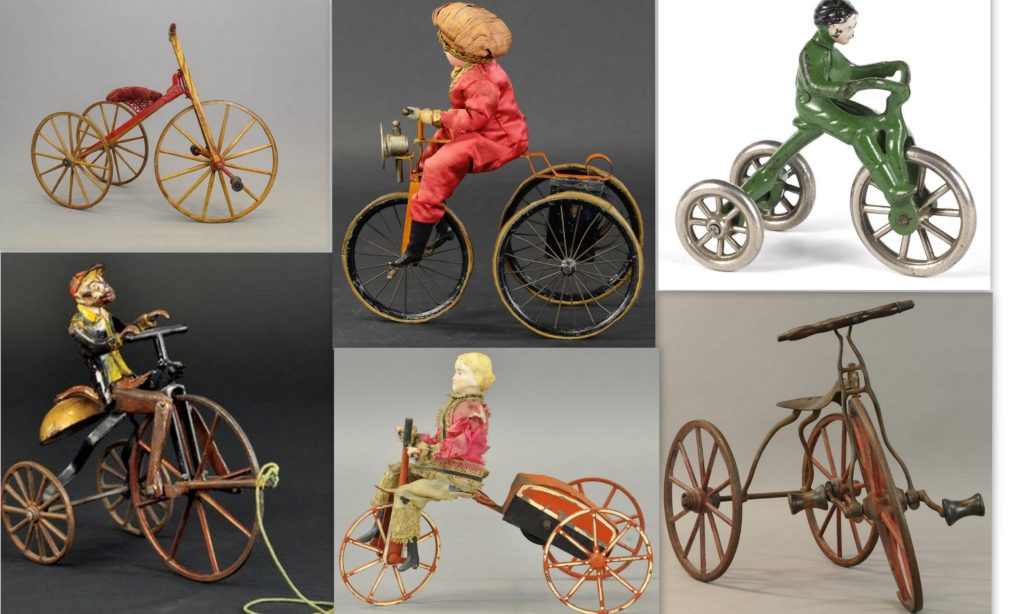
For this tinplate tricycle there are a few possibilities:
-It could be a unknown Martin maybe one of the missing Martin numbers 144 -145 or 146 ?
-Made as a special assignment.
-As a prototype exemple.
-It could be a old forgery.
-But it can also be a toy made by another toy manufacturer with (partial) use of Martin parts to create a new toy.
That has also been done with the toy called “Mr Chopinard” , this toy is the adaptation of Martin’s “Le Pochard” mounted on a barrel.
A small inventor/toymaker Foucault presented this toy at the Le Concours Lépine in 1901.
Perhaps Fernand Martin sold these “Martin” toy parts to these mostly small manufacturers.
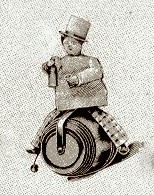
Source: (Cnum – Digital Conservatory of Arts and Crafts – http://cnum.cnam.fr)
If you come across such toys for the first time, with clear features and even the name reference to Martin, the big question will be: do you call them a “Martin” or else?
If there are collectors somewhere who have seen this toy somewhere else before or know more about this toy, please contact me.
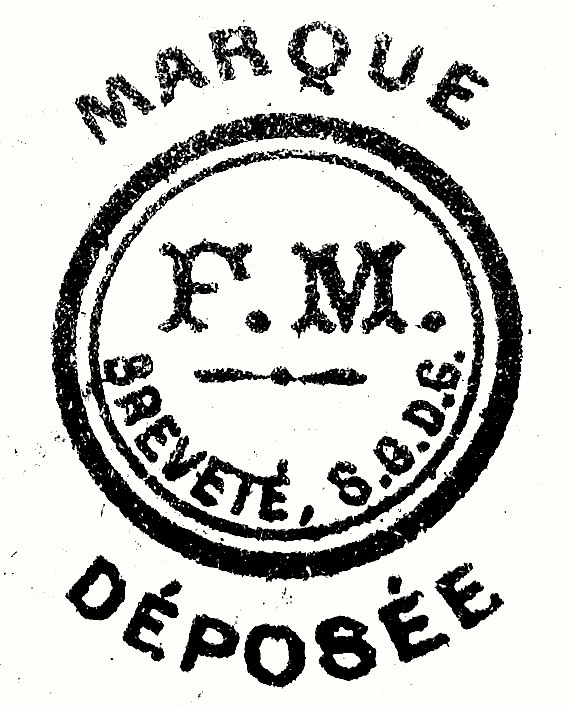
what a great find and captivating research, and interesting hypotheses! Old toys are like art work and old paintings; they do require patience, attention to details and due diligence.